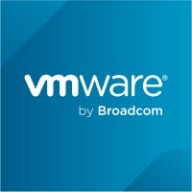

RHEV and VMware vSphere are competing products in the field of virtualization solutions. VMware tends to have an upper hand because of its comprehensive feature set, though RHEV is preferred for its affordability.
Features: RHEV integrates well with heterogeneous environments and is open source, offering flexibility. It supports KVM for virtualization and includes features like SELinux for security and NIC bonding for network redundancy. VMware vSphere provides robust management tools, high scalability, and advanced memory management features like vMotion and high availability, designed for large enterprises.
Room for Improvement: RHEV could improve in areas like user-friendliness and reducing the need for specialized technical expertise. It might also enhance its graphical interface and documentation. VMware vSphere could reduce its cost structure as its pricing can be prohibitive. Also, integration with open-source solutions could be more seamless, and its support could be improved for mid-sized businesses.
Ease of Deployment and Customer Service: VMware vSphere stands out due to its simplicity in deployment, backed by extensive documentation and professional customer support. RHEV is relatively easy to set up but may demand more technical expertise, which can complicate deployment for smaller teams.
Pricing and ROI: RHEV offers a low initial setup cost with significant ROI for smaller businesses. VMware vSphere, despite a higher cost, often promises considerable long-term ROI through its adaptable and rich feature set, appealing to enterprises seeking robust virtualization solutions.
| Product | Market Share (%) |
|---|---|
| VMware vSphere | 17.0% |
| RHEV | 2.7% |
| Other | 80.3% |


| Company Size | Count |
|---|---|
| Small Business | 22 |
| Midsize Enterprise | 5 |
| Large Enterprise | 10 |
| Company Size | Count |
|---|---|
| Small Business | 174 |
| Midsize Enterprise | 137 |
| Large Enterprise | 256 |
Red Hat Enterprise Virtualization, or RHEV, is a leading open standard enterprise virtualization management solution. This solution supports virtualization of servers and desktops using the same infrastructure and a single easy-to-use interface.
Because RHEV is based on open standards, it is vendor-independent and a lot more cost effective and flexible than proprietary solutions.
VMware vSphere is a versatile virtualization platform known for its ease of use, flexibility, and high availability. It supports seamless migration, optimal resource allocation, and centralized management, making it highly suitable for diverse infrastructure needs.
VMware vSphere is widely adopted for its virtualization capabilities that enhance hardware efficiency and ensure minimal downtime through features like High Availability and Distributed Resource Scheduler. Despite criticisms about high licensing costs and limited fault tolerance, it remains a preferred choice due to its stability, scalability, and robust integration options. Users appreciate its efficiency in managing virtual machines and hosting enterprise applications, although challenges with web client performance and hardware compatibility are noted. Organizations often look for better integration with cloud services and enhanced automation and scalability.
What are the core features of VMware vSphere?
What benefits and ROI can businesses look for?
VMware vSphere is implemented across sectors like healthcare, finance, and education for server virtualization, data center management, and private cloud creation. Its use in facilitating business-critical operations ensures high availability and efficient resource use, supporting both development and production environments.
We monitor all Server Virtualization Software reviews to prevent fraudulent reviews and keep review quality high. We do not post reviews by company employees or direct competitors. We validate each review for authenticity via cross-reference with LinkedIn, and personal follow-up with the reviewer when necessary.